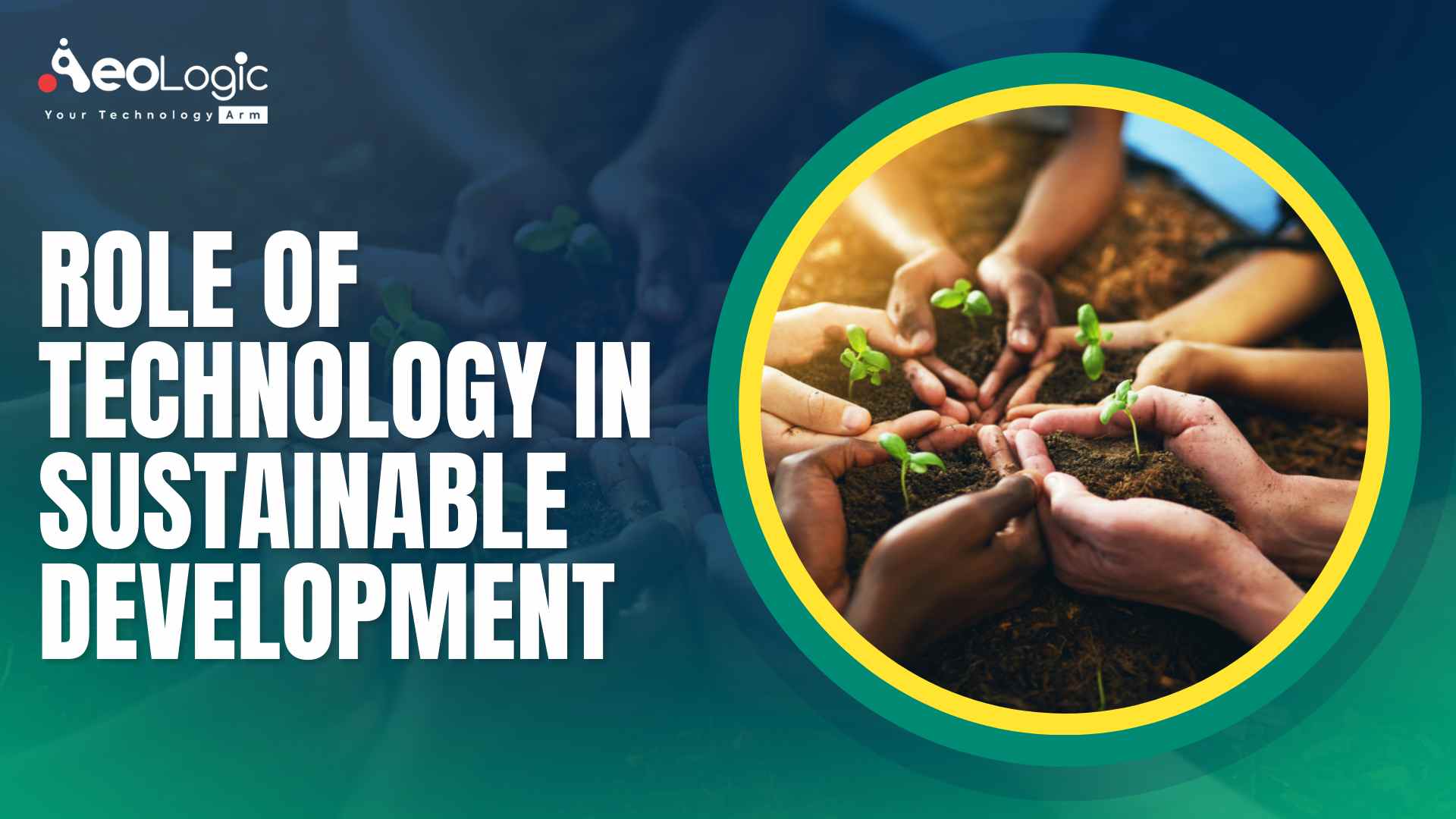Sustainability is no longer a tick-box exercise, but an environmental, economic, and social aspect that is impacting our lives in almost every way. Understanding that no planet B exists for our youth and accomplishing 360° sustainability is imperative for all. Now more than before, people are focusing on social issues and sustainability. They are requiring that businesses step up and work under sustainability standards. Hence, the role of technology in sustainable development arises.
Also read: How Does Technology Help Sustainability
Accomplishing Business Sustainability Goals – A Pressing Priority
Latest studies have found that more than 70% of global consumers are willing to transform their consumption habits to mitigate their environmental footprint. For constantly striving in the competitive world, businesses are required to provide services that leverage not only consumers but also the environment. For instance, worldwide energy usage is projected to grow by nearly 50% by 2050. Investing in green energy that is accessible, clean, affordable, and sustainable, is now becoming a priority for organizations and the people.
The role of technology in sustainable development is helping businesses with net-zero and other environmental, social, and governance goals.
Leading companies are already benefitting from technology accelerators to realize sustainability goals. For example, IoT, data analytics, and sensors are facilitating to decarbonize industry operations and solving issues by:
- Networking and communicating: Sharing information across networks, machines, and devices proficiently.
- Monitoring and tracking: Capturing Real-time data and reporting of operational performance within the connected devices.
- Analyzing, improving, and forecasting: Getting insights from data for improved decision-making on process efficiencies for the future.
- Augmenting and automating: Linking the digital and physical worlds with remote management and the construction of autonomous systems.
Following are the four ways technology can accelerate net-zero ambitions:
Process optimization and digitization: Creating sustainable operations that take stakeholder preference and enhance business resilience
Accepting advanced technologies, like cloud-native architectures for data-driven optimization of processes. It is helping businesses meet their emission reduction goals. As well as setting new industry standards. Such measures are having the potential to yield significant CO2 reduction.
Carbon data transparency: Utilizing technology-led solutions that guide organizations with carbon accounting across the value chain
IoT and blockchain-enabled sustainability solutions are facilitating transparency across all levels of an organization. Data and guidance are accessible and visible to all key stakeholders, which facilitates sustainable decision-making.
Circular products and services: Building products and services that are reusable and sustainable with zero pollutants.
The role of technology in sustainable development is involving the implementation of new types of product innovations and value chain solutions to fine-tune offerings. Engaging consumers and improving performance over time. Such solutions are enabling companies to create. Eventually, encouraging zero-waste products while improving ROI and building new revenue streams.
Data ecosystems and ventures: Adopting cross-industry data-sharing ecosystems that are enabling compliance with sustainability regulations
Data ecosystems are providing valuable, shared, and real-time insights into the environmental and societal impacts of a product or service. All while allowing organizations to meet their sustainability targets and compliance goals.
Responsible AI for sustainable outcomes
The role of technology in sustainable development like AI is essentially changing the way we think, live, work, and relate to one another and the external world. Business operations and processes can be optimized with such AI-enabled systems. While companies are using AI to augment efficiency and output and lower energy costs, training AI demands a lot of energy. Hence, to sustain an enterprise’s efforts to mitigate its environmental footprint, it must also look at decreasing the carbon outputs of its AI/ML models. However, organizations are also using the power of AI to simultaneously reduce their carbon footprints and mitigate material risks.
Also read: How Can Technology Contribute to a Sustainable Future?
AI models must be as efficient as possible so that training the AI model does not need large amounts of energy or computing power to augment accuracy and performance. Enterprises are requiring to conduct an efficiency vs accuracy test to determine if the resource utilized is justified from both a business and an environmental perspective.
Conclusion
The success of frontrunner companies is depending on leveraging technology from the very beginning. Through advanced technologies such as AI, IoT, or blockchain companies are analyzing, reducing, or optimizing their environmental impact. However, the role of technology in sustainable development is most definitely part of the solution.
Get in touch with us to know more!
FAQs
How does technology is helping sustainable development?
The tools of sustainable development—economic instruments, legislative measures, and consumer pressures—are aiming at achieving technological changes such as recycling, waste minimization, the substitution of materials, transforming production processes, pollution control, and more efficient utilization of resources.
Is technology the answer to sustainability?
Technology is a crucial enabler of sustainability – from accelerating Net zero transitions to creating more sustainable value chains. New research revealed that companies with the most comprehensive sustainable tech strategies execute better across the board.









